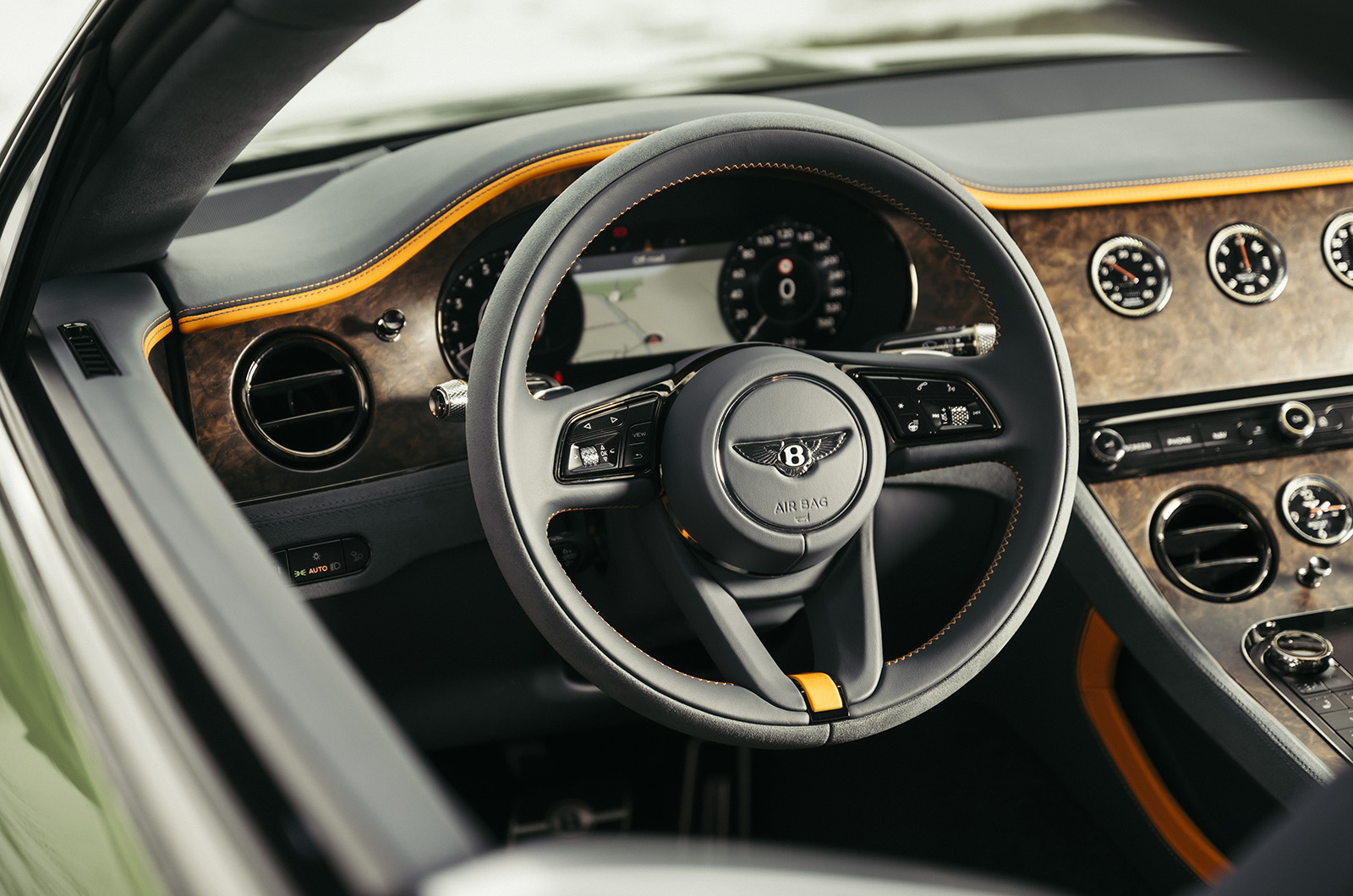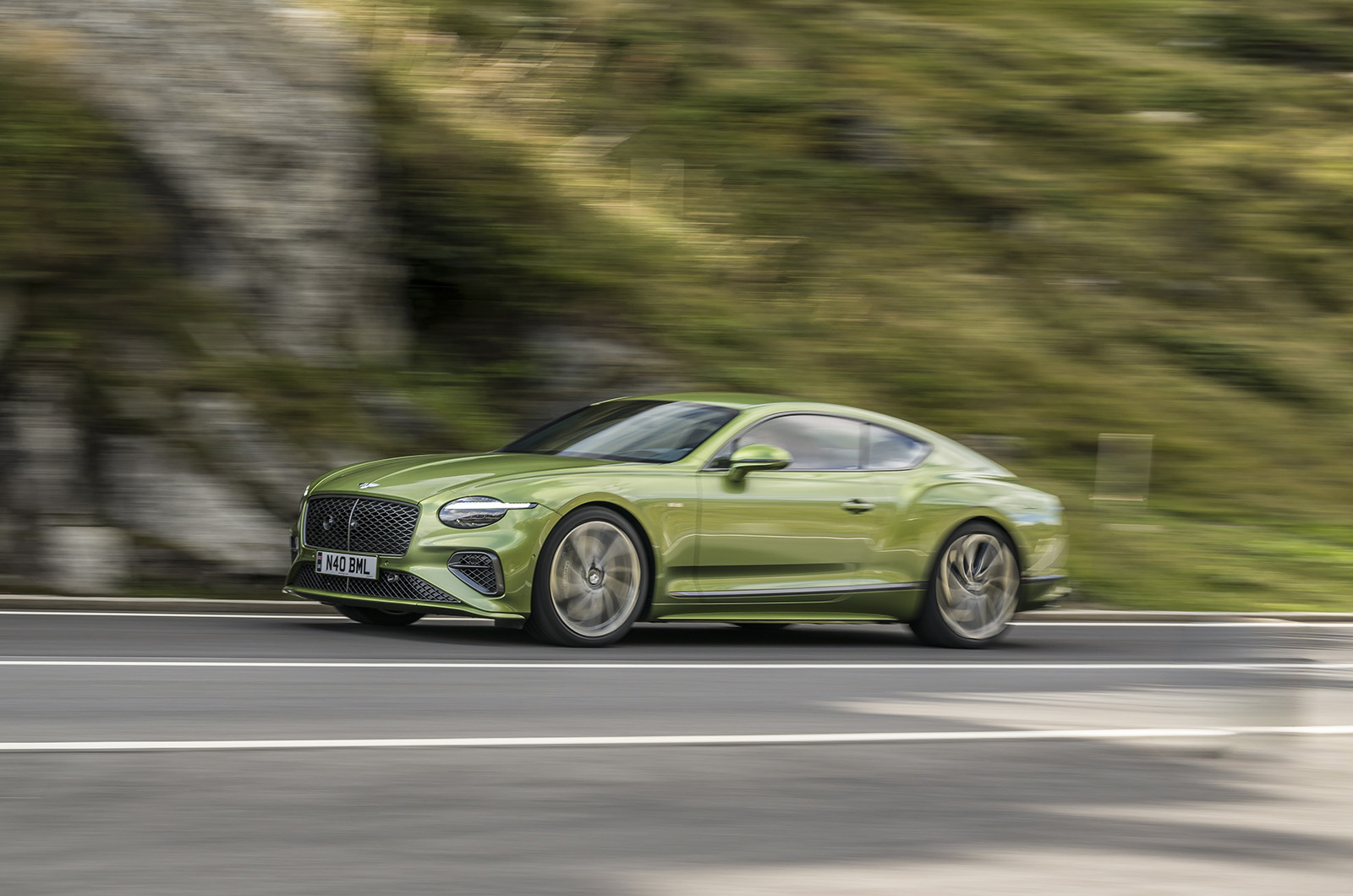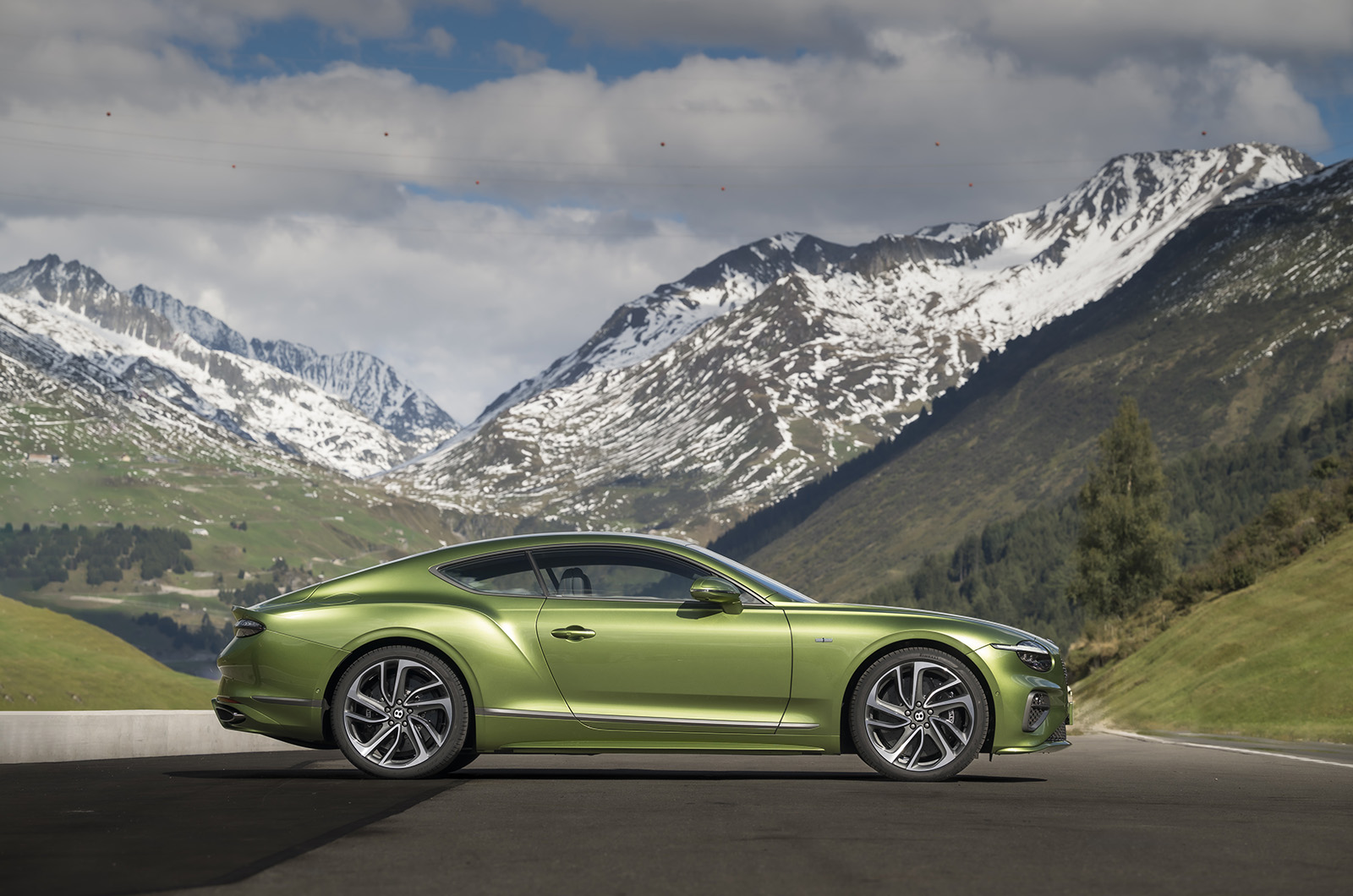More than anything, the new Bentley Continental GT Speed represents a bold extension of the Crewe company’s abiding philosophy. For the past 40 years, ever since the high-performing Turbo R single-handedly revived a moribund Bentley marque, the firm has specialised in offering cars that seem far too refined and luxurious for their supercar performance. Or viewed another way, cars that seem too practical for their exalted position in the automotive firmament.
These capabilities were especially well expressed in the groundbreaking Continental GT of 2003, a car whose dynamics at the time easily equalled those of far less usable front-engined Astons and Ferraris. They were further emphasised when the third-generation 2019 GT adopted the Volkswagen Group's MSB platform (shared with Porsche), which enabled bigger wheels and brakes, lots of extra technology and a reduced front overhang for even better weight distribution.
Now it’s time for the fourth-generation car, officially called Continental GT Speed, to widen this virtuous spectrum even further. Central to the new offering is a brand-new plug-in hybrid powertrain, comprising a new 584bhp 4.0-litre V8 engine and a 187bhp electric motor that’s buried inside the engine’s eight-speed dual-clutch gearbox. The car also gets an even more ideal weight distribution, and a new system of two-mode air springs and dual-valve dampers that bring extra versatility to the three main driving modes (Sport, Comfort and Bentley).













































